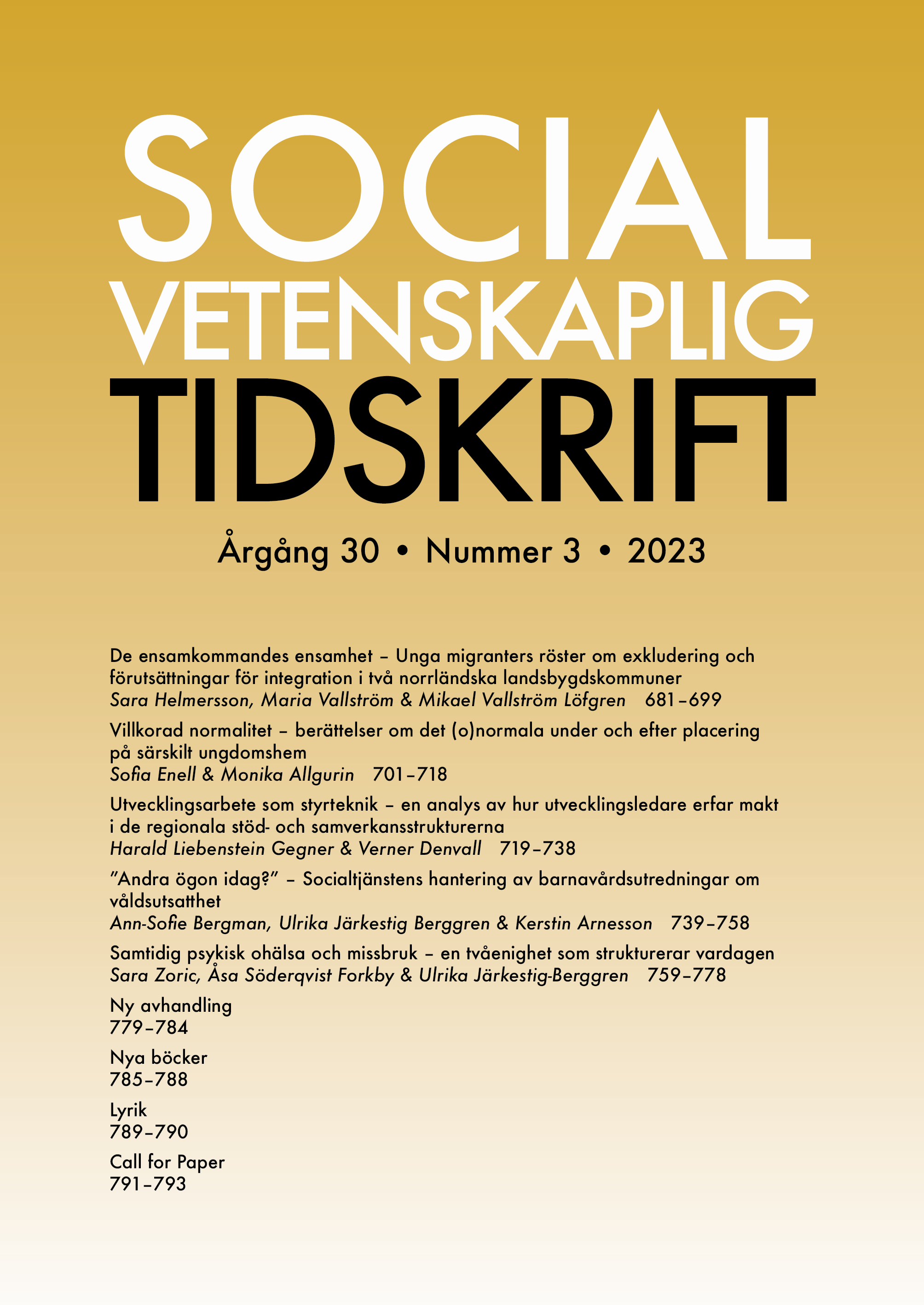Villkorad normalitet
– berättelser om det (o)normala under och efter placering på särskilt ungdomshem
DOI:
https://doi.org/10.3384/SVT.2023.30.3.4204Nyckelord:
normality, secure care, young people, young adults, sad tales, relational perspective, institutional practices, longitudinal qualitative researchAbstract
Conditioned normality - stories of (ab)normal life during and after secure care placements
Secure care for young people has an ambiguous mission. It is supposed to socially integrate troubled young people into society by excluding them from the same. As such, young people are supposed to be normalised by abnormal interventions. Young people in secure care also experience the placement as deviant. In this study, we depart from a relational understanding of normality and stories of apology, ‘sad tales’, to explore how young people understand and do normality during and after placement in secure.
This interview-based study builds on almost a decade-long engagement with 11 young people, following their lives after institutional placement. The analysis demonstrates three different ways of doing normality: 1) integrating the normalisation practices of the institution in their current life, 2) distancing and, if possible, hiding their experiences from others and, 3) isolating themselves from overly close relationships because of repeated betrayals from adults. Although different in character, these three ways are underpinned by a focus on self-reliance and independence, and an emergent need ‘to behave’.
This study is a reminder that institutional practices of normality create a feeling of being deviant many years after leaving the institution. Thus, the need for developing supporting structures and relations that acknowledge and address the young people’s experiences of abnormality and in such way enable them to feel respected, valued and cared for, is emphasised.
Downloads
Publicerad
Referera så här
Nummer
Sektion
Licens
Copyright (c) 2023 Sofia Enell, Monika Wilińska

Det här verket är licensierat under en Creative Commons Erkännande 4.0 Internationell-licens.
Allt material i Socialvetenskaplig tidskrift publiceras sedan 2022 (Vol 28 Nr 2) med omedelbar öppen tillgång (open access), under Creative Commons-licensen CC BY 4.0. Upphovsrätten till innehållet tillhör respektive författare.
Allt innehåll i tidskriften är fritt tillgängligt utan kostnad och får fritt läsas, laddas ned, kopieras, delas, skrivas ut och länkas. När innehållet används måste författare, källa och licens anges. Författaren kan fritt göra sin publicerade text tillgänglig på institutionella och internetbaserade arkiv, exempelvis sitt lärosätes digitala arkiv eller andra tjänster för detta.
Inga publiceringsavgifter tas ut vid publicering i Socialvetenskaplig tidskrift.


